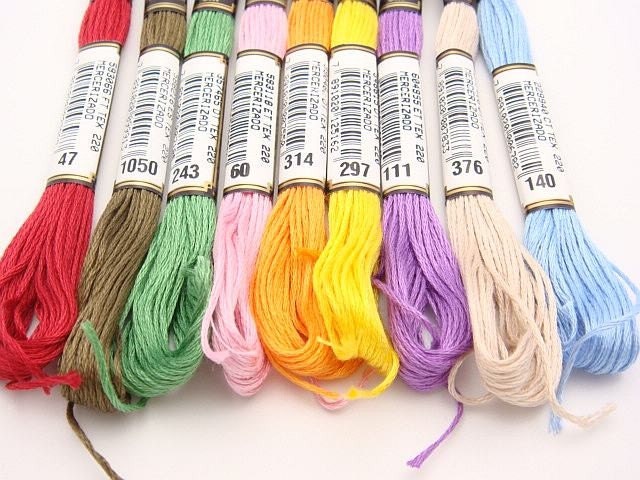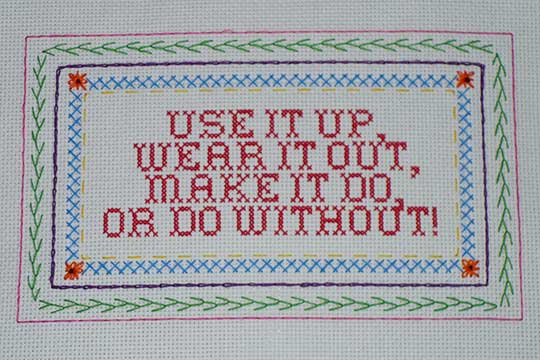Here is another activity I have done with the young women. Beginning Cross Stitch. It would also be a great activity for the activity day girls as well.
*
Honestly, this turned out much better than I thought it would. When the girls told me they wanted to learn how to cross-stitch I thought to myself, "Cross-Stitch? Really?" Luckily, a quick refresher course and a few supplies later... voila! "You girls would be so proud of me!"
*
*
I went to Michael's and picked up a plastic canvas sheet for each girl. My first thought was to purchase an embroidery hoop and fabric for each girl, but I am glad I went with the plastic. I figured the plastic canvas would be easier to work with. And it was.
*
Honestly, this turned out much better than I thought it would. When the girls told me they wanted to learn how to cross-stitch I thought to myself, "Cross-Stitch? Really?" Luckily, a quick refresher course and a few supplies later... voila! "You girls would be so proud of me!"
*
SUPPLIES USED
- 14 count plastic canvas, perfect for beginners
- embroidery floss
- 22 rounded needle
- scissors
- pencils
I went to Michael's and picked up a plastic canvas sheet for each girl. My first thought was to purchase an embroidery hoop and fabric for each girl, but I am glad I went with the plastic. I figured the plastic canvas would be easier to work with. And it was.

*
I started by drawing a grid on the chalkboard and explaing in detail how to create a basic cross stitch. Remember, I am a visual learner. :) I think that approach worked out really well. We also went over how to thread a needle, knotting the end of the thread, and finishing a stitch.
*
There was some one-on-one instruction where needed. But, the girls picked it up really quickly. And we heard a number of them say "this is fun!". :)
*
The girls used their pencils to draw a picture, a favorite quote, a design, whatever they wanted to on their sheet of plastic. Then, using their new found knowledge, they began to stitch.
*
Here is a sample of a few different stitches (no, I did not stitch this):
*
 *
*
DID YOU KNOW?
The word 'Sampler' is derived from the Latin word 'Exemplum'. The meaning of this word being 'an example to be followed'. (You could create a great object lesson with this information, couldn't you?) :) Samplers are different examples of a stitches. It is generally believed that sampler stitching was carried out by young girls to encourage skills in stitching for use in later life. A sampler would probably have a variety of different stitches, and would be kept by the girl as a reference for future work. It would normally have been the particular individuals first attempt at stitching.
*
During the 19th century, samplers became an important part of the school curriculum, young girls were encouraged to stitch to prepare themselves for their role as wives and mothers. These samplers tended to simple in their design, usually only having alphabets, numbers, their name and date, and the name of the school. The age of the stitcher ranged from as young as six up to about the age of fifteen years. The average age being eleven.
*
Creating a sampler would be a wonderful 10 hour project for the young women. And a great addition to their hope chests. :) Just sayin'.
*
Here are a couple modern day samplers I found (plus a few more patterns):
*

Here is a sample of a few different stitches (no, I did not stitch this):
*

DID YOU KNOW?
The word 'Sampler' is derived from the Latin word 'Exemplum'. The meaning of this word being 'an example to be followed'. (You could create a great object lesson with this information, couldn't you?) :) Samplers are different examples of a stitches. It is generally believed that sampler stitching was carried out by young girls to encourage skills in stitching for use in later life. A sampler would probably have a variety of different stitches, and would be kept by the girl as a reference for future work. It would normally have been the particular individuals first attempt at stitching.
*
The above sampler was done by 6 year old (yes 6),
Emily Shelton Sander, dated 1858.
*During the 19th century, samplers became an important part of the school curriculum, young girls were encouraged to stitch to prepare themselves for their role as wives and mothers. These samplers tended to simple in their design, usually only having alphabets, numbers, their name and date, and the name of the school. The age of the stitcher ranged from as young as six up to about the age of fifteen years. The average age being eleven.
*
Creating a sampler would be a wonderful 10 hour project for the young women. And a great addition to their hope chests. :) Just sayin'.
*
Here are a couple modern day samplers I found (plus a few more patterns):
*

Daisychain ABC's Crewelwork Sampler Pattern





